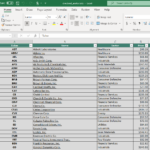Themes in Alternative Investments. 2023. Shaen Corbet and Charles Larkin, eds. De Gruyter.
The alternative investment space continues to grow beyond hedge funds and private equity to embrace various types of financial innovation. This volume affords the topic a rich and varied presentation from several authors, not only of investments but also of themes that occupy this realm of the investment universe.
Opacity and illiquidity are part and parcel of this evolution. With new opportunities come challenges in performance measurement, due diligence, and regulation. Technological innovation proceeds apace, effective oversight less so. Analysts, portfolio managers, risk professionals, and regulators will find this work a timely and useful compendium. Officialdom in a regulation-averse incoming presidential administration in the United States that has promoted digital currency with abandon would do well to heed the lessons contained within its covers.
CFA charterholders and candidates will also find value in this text as they will increasingly be confronted with the realities and challenges of the ever-changing alternative asset category.
The selection of topics in this book appears at first blush to be random. Not so. Rather, the chapters represent a cross-section of issues relevant to the current state of nontraditional investments. Information asymmetry is a common thread, presenting an ongoing challenge to regulators and practitioners who aspire to a greater understanding of the complexities of this category.
An account of the Mozambican tuna bond scandal underscores the risks inherent in less developed markets. This study on state-owned enterprise misappropriation of funds earmarked for tuna fishing and maritime security reminds us of how rapidly things can devolve. The revelation of the misused funds occasioned a collapse of the national currency and a sovereign debt default. Poor due diligence and oversight by lenders who approved these loans offer a cautionary tale for risk managers and regulators who deal with higher-risk economies.
Relatedly, the discussion and analysis of Silicon Valley Bank’s rise and fall suggest ongoing deficiencies in regulation and policy. Regulatory surveillance and capital requirements arising from the Dodd-Frank Act, enacted in the wake of the 2007-2009 Global Financial Crisis, were intended to head off the collapses of financial institutions of the sort that led to that calamity. Yet a relaxation of the applicability of regulatory scrutiny and stress testing to banks with assets under $250 billion during the first Trump administration afforded SVB freer rein in its underwriting of loans to the technology sector, subjecting it to a far greater degree of industry-specific risks.
A confluence of strategic choices, such as the bank’s vast pandemic-era accumulation of deposits that it invested largely in interest-rate-sensitive US Treasury and mortgage-backed securities, along with the exogenous shock of the Federal Reserve’s decision to raise rates to staunch inflation, served the bank poorly when it was hit with a surfeit of withdrawal requests.
Finding itself caught out, SVB had to sell fixed-income holdings at a significant loss, which in turn, occasioned a vicious circle of ever-increasing withdrawal requests. This reverberative effect further eroded investor confidence and the bank’s share price, resulting in SVB’s implosion. The implications of this collapse were far-reaching: interest-rate risk management is critical, as is portfolio diversification to mitigate sector-specific risks.
Centralized and decentralized finance appear to have more in common than would seem to be so at first glance. Opacity, illiquidity, and risk concentration are as relevant in the digital currency space as they are in the world of fractional-reserve banking. The book’s analysis of FTX’s rapid ascent and decline underscores the seemingly ephemeral nature of the burgeoning cryptocurrency industry.
Indeed, the company’s travails and downfall should serve as a powerful reminder that the promise and potential of decentralized finance are as fraught with risk as their counterparts in the conventional kind. In this instance, fraudulent conduct was very much at work; the lure of innovation and subsequent disarray emphasizes the importance of rigorous due diligence. More intensive regulation and corporate governance will be critical prospectively.
This necessary regulatory rigor should likewise apply to the novel seductiveness of the non-fungible token (NFT), a digitized innovation using the blockchain technology chassis that undergirds cryptocurrencies to create a distinct noninterchangeable item of value. NFTs have gained popularity in art, music, and real estate as a means of identifying a work’s originality and ownership.
Yet these items are subject to various types of fraud—rug-pull schemes, price manipulation, illusory value creation, and so-called tech enamorment or undue fascination with the novelty of this technology with indifference to its potentially adverse impact on society. Market saturation of these tokens, the questionable promise of decentralized finance, and the precarity of their value in the wake of the FTX exchange collapse suggests that these are early days for a product requiring more scrutiny and oversight.
Two chapters provide an interesting and fairly detailed examination of the challenges of investing in wine. Outside the expertise of most advisors, highly specialized knowledge of such industry dynamics as terroir, weather, vintages, and agriculture is essential, as is knowledge of industry dynamics.
The lack of consistent data makes investing in wine a daunting task. And there are different ways to obtain exposure including direct investment, bespoke allocation through the guidance of a wine investment management company, and wine mutual funds managed like hedge funds. In addition, the sector lacks quality data, and there are varying opinions on risk and return measurement. Investment advisors would suggest a small allocation to this sector. Would it be better to imbibe than invest?
Another chapter revisits what can be considered more traditional alternative investments. As the discussion of private equity and hedge funds makes plain, regulation is often uneven and incomplete. In the aftermath of the Global Financial Crisis, the private market space has been subject to greatly expanded regulation. Views contrast on its benefits in a realm where opacity is necessary to achieve alpha yet simultaneously presents risks to consumers.
As hedge funds and private equity funds have grown since the crisis, they have presented systemic risks that regulation needs to address. The emergence of the Dodd-Frank Act (DFA) in the United States and the Alternative Investment Managers Fund Directive (AIMFD) in Europe presents a challenge to policymakers and regulators, namely, differences in these two regimes could induce investment advisors to engage in regulatory arbitrage. These challenges and opportunities continue as the space grows and avails itself of various fintech solutions.
Even the seemingly benign European money market funds pose a challenge to regulators as these vehicles are by design liquid yet invest in less marketable securities, a problem when investors en masse want or require access. Liquidity mismatch continues to be a problem, as the March 2020 run on money market funds made evident. Variations in valuation methods may affect withdrawal risks to the fund and, by extension, its investors. Liquidity and valuation thresholds may compel managers to use liquidity management tools to limit withdrawals.
Macroprudential policy needs to address both liquidity mismatch and interconnectedness, as these funds often hold short-term bank and non-financial company debt. Exogenous shocks to money market funds that could impede their ability to purchase short-term paper could, in turn, propagate illiquidity among banks and companies. The fragility of money market funds, along with their critical role in the financial ecosystem, will continue to be a priority for regulators.
The volume concludes with two chapters on the role of artificial intelligence (AI) in the operation and regulation of financial markets. This burgeoning technology has great promise in the detection of market manipulation techniques within high-frequency trading. These involve artificial stock price inflation and sales to the detriment of less-informed investors, the creation of false order book imbalances to deceive traders, and the use of algorithms to induce price momentum and entice other traders to further such momentum.
Regulators will need a deeper knowledge of the risks and benefits of AI to understand how these systems operate. Consider the possibility of AI’s increasing operational autonomy and learning capabilities and how that could (im)properly identify manipulative conduct. Regulation needs to be explicitly tailored to AI’s application in financial markets, with a view toward cross-border harmonization. Transparency and ethical usage will be critical to developing a process that can enhance the proper functioning of markets. These are early days.


























